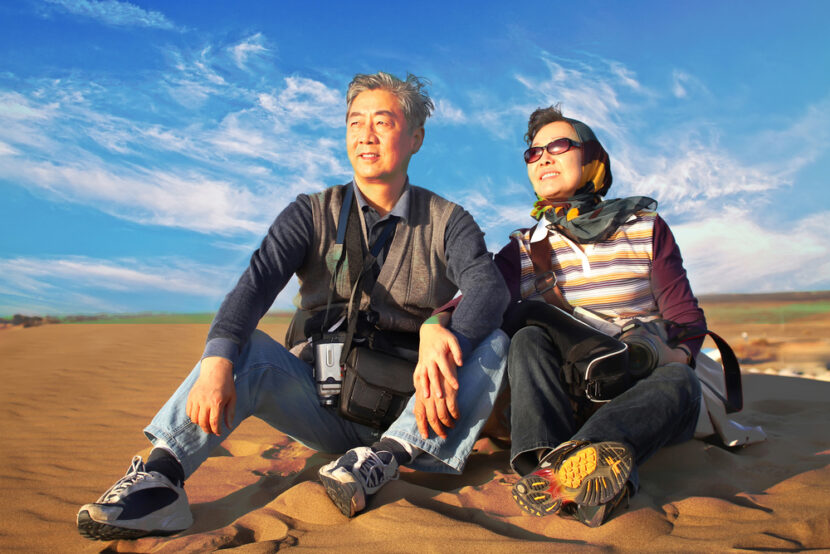COSTA MESA, Calif. – On a hot summer day, nearly two dozen Chinese tourists descended from a white shuttle bus for an afternoon of shopping at one of Southern California’s signature upscale malls.
One tourist conferred with a salesman at South Coast Plaza about a plum-colored, $610 Prada handbag while fellow visitors on the 10-day tour sauntered through the mall, each with their sole child in tow, after a morning of whale watching off the California coast.
It’s a common scene at the popular destination in Orange County, which is doing what it can to keep buses filled with Chinese tourists coming. To make them feel at home, it accepts China’s UnionPay card and provides Mandarin-speaking salespeople.
From the mall’s shops to tourist spots that offer maps and brochures in Mandarin to hotels serving congee, or rice porridge, for breakfast, businesses in California are trying to entice the growing numbers of Chinese tourists coming to the U.S. to visit the state – and spend money.
Tourism from China to the U.S. has soared since the countries signed an agreement in 2007 promoting travel. More than 1.8 million Chinese visited last year, a three-fold increase in five years. By 2018, the number is expected to surpass 4 million, according to the U.S. Department of Commerce.
California, the No. 1 destination, holds particular allure due to its proximity to China, theme parks and sunny weather. Nearly half of all Chinese tourists make a stop in the state.
Haybina Hao, of the National Tour Association, which qualifies U.S.-based tour operators to receive Chinese tour groups under the 2007 agreement, said the tourists are keen to see how a relatively young country like the U.S. developed so quickly and became so prosperous.
“Until they have visited U.S.A., they don’t feel they have done their international travel yet,” Hao said. “They need to see it and put themselves in the photograph, so they can prove they have done this.”
During their travels, they each spend an average of $5,400, 21 per cent more than the average for all overseas tourists.
“We see tremendous potential,” said Nick Hentschel, vice-president of AmericanTours International LLC. He said 15 per cent of the company’s business now stems from China compared to virtually none a little more than five years ago.
Hentschel said China is the only country where ATI, which originally focused on tourism from Western Europe, Australia and New Zealand, has opened a local office. “But it is cutthroat,” he said, adding that some tour operators slashed prices to vie for a place in the Chinese market.
At first, tours from China mostly included older people, some who had saved for years to make the trip. But now more also include middle-aged parents bringing their only child to see America and school groups of teens who tour during summer break.
Many are eager to visit Disneyland and snap photographs at landmarks such as the Hollywood sign and San Francisco’s Golden Gate Bridge. They enjoy trying American foods – steak is a favourite – and taking advantage of cheaper prices for designer goods.
“It’s shopping paradise,” said 35-year-old Cici Chen on a stop at Disney California Adventure. Chen said she planned to fill up her suitcases on her California vacation before returning to Shanghai.
In the early years, Disney officials travelled to China to try to explain to the elder generations what the park was about since many weren’t as familiar with American stories and movies as are younger visitors today.
“A challenge was many of our Chinese guests were not familiar with the Disney stories,” said Nicky Tang, director of Asia Pacific sales for Disney Destinations, of the older generation of tourists. “They grew up not knowing who Snow White is or Cinderella or Peter Pan.”
Many Chinese tourists see America from large tour buses, while some travel in smaller groups or rent cars to explore on their own. Others come on trips sponsored by employers as job-related perks, and travel in huge groups.
A 7,000-strong contingent held a two-day meeting in Southern California earlier this year and then fanned out to travel across the region. A group more than twice that size is expected in California next year, said Ed Fuller, president of the Orange County Visitors Association.
Zhang Huan, 42, was among those touring Disney California Adventure with his wife, mother-in-law and 11-year-old son. He said he budgeted $20,000 for the family’s first U.S. trip. While the itinerary mostly focused on leisure, Zhang said he was also looking forward to making a stop with his son at a college campus.
He hopes it’s not the last visit there.
“If he can study hard, he can go to Stanford,” Zhang said.
